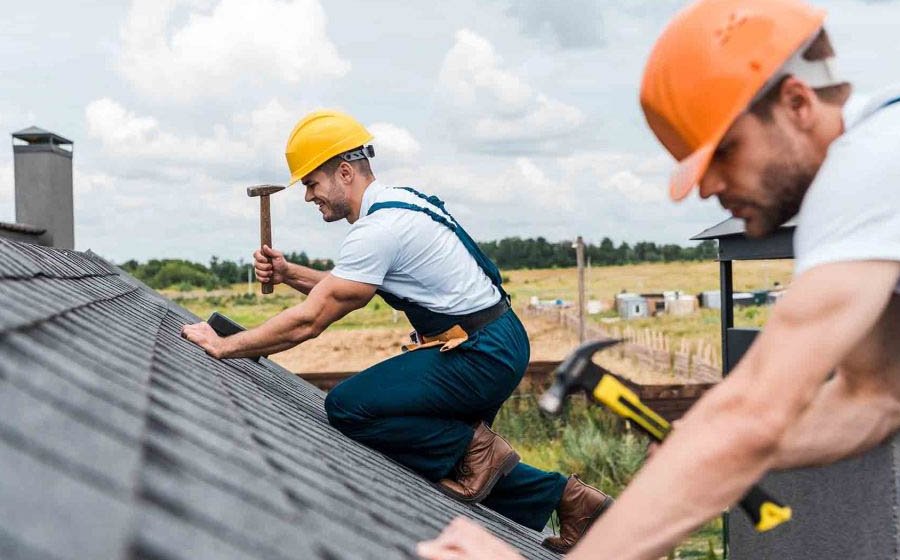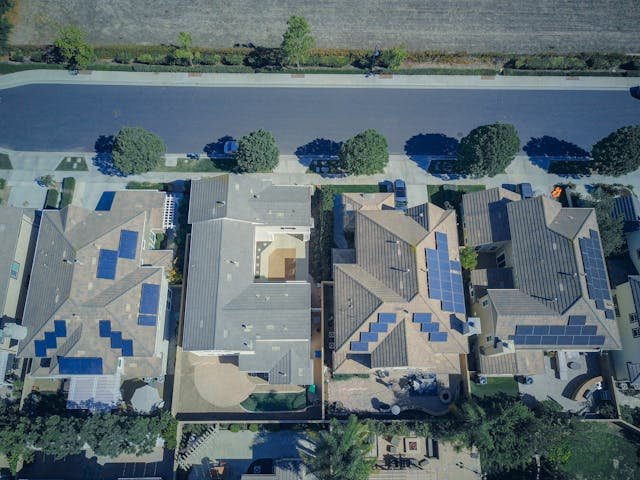Getting your home roofed is a major investment, and knowing who should do the job can often be difficult. Should you hire a residential roofing company or someone with more commercial experience? Knowing the key differences between residential and commercial roofing will ensure you make the right decision for your home or business. In this post, we’ll break down what makes these two types of roofing unique so you can have peace of mind when selecting a reliable company. Read on to learn more.
Materials
Residential roofs generally make use of materials such as asphalt shingles, tiles, slate, and cedar shake shingles that easily drain precipitation with a steep slope serving the same purpose. On the other hand, when it comes to commercial roofing, developers typically call on galvanized steel, tin, copper, and aluminum for their business buildings. Some go a step further and opt for more high-tech composite materials like PVC, built-up roof membranes, or Thermoset roof membranes with multiple reinforced layers to give their structure extra durability. With numerous material options out there for both residential and commercial roofs, it can be difficult to decide which is right for you just remember that in terms of installation choices and long-term maintenance costs, the differences could matter more than you think.
Installation Methods
Residential roofs may only involve a few simple steps to complete with much smaller surface areas and shallow slopes, allowing them to typically be completed in one day. This involves attaching wood boards to trusses, installing underlayment, and applying the outer materials. On the other hand, for commercial roofs, the process of installation can take several weeks because there must be multiple layers of metal and insulation installed over a much larger area. These projects require specialized tools and materials not needed in a residential roof construction setting, making them more complex. Consequently, safety equipment is mandatory when dealing with commercial roofing projects.
Slope
Residential roofing may be more intricate and visually pleasing from a decorative standpoint than commercial roofing. After all, who doesn’t love the look of a brightly-painted roof with elegant lines and intricate patterns? But in terms of design purpose, commercial building roofs are intended to keep water out while having no visible slope, so they don’t detract from the aesthetics of the building or its surroundings. On the other hand, residential roofs generally have visible slopes to ensure water drains away properly. In addition, residential rooftop measurements tend to take up a smaller area than commercial properties and, as such, don’t put as much structural strain on buildings. Both roof designs or styles have different spaces suited for serving specific requirements best.
Maintenance
Homeowners must observe their residential roofs from the ground level at periodic intervals, looking for signs of damage like missing shingles and detached gutters. But commercial buildings require a professional eye. Routine inspections by a skilled contractor are imperative to ensuring the long-term protection and efficiency of your business’s roof surface. Inspections go beyond surface damage; they also cover any leakages or discrepancies caused by contractors who have worked on the roofing system. Vigilant inspections via top-tier professionals could mean the difference between a successfully maintained roof and one riddled with potential dangers down the line. With all things considered, a commercial roof is an investment that deserves regular care and attention.
Weather Conditions
Weather conditions can heavily influence the construction and safety of the roofing material. When it comes to residential and commercial roofs, the selection of materials differs significantly due to their different functionalities in response to weather conditions. Commercial buildings tend to have harsher environments than residential rooftops; thus, asphalt roofs are usually preferred as they have the ability to move with the environment and protect the structure from intense temperatures or heavy rains. On the other hand, residential homes require less protection and steel roofs offer just that–a reliable solution that is great for sloped building structures. Furthermore, metal roofing also offers good insulation, which keeps the home temperature consistent during all seasons for those dwelling inside.
Cost
Residential houses are able to successfully cover their rooftops without having to spend too much money as more inexpensive materials take care of the job. Commercial buildings require a specific type of roofing with features beyond what a typical residential home would need to function properly, making them more costly than a homeowner might consider. Furthermore, to be even more cost-conscious, you can look for recyclable roofing materials such as recycled shingles from asphalt, wood fiber, and plastic.
It’s important to take into account your specific needs when considering residential vs. commercial roofing. Both options have their merits, but depending on what you are ultimately looking for, it’s paramount that you consider factors such as weight load requirements, susceptibility to weather conditions, and cost considerations when comparing the two solutions. This will help ensure you make the best decision concerning your residence or commercial building moving forward.
















